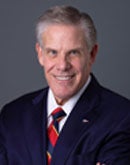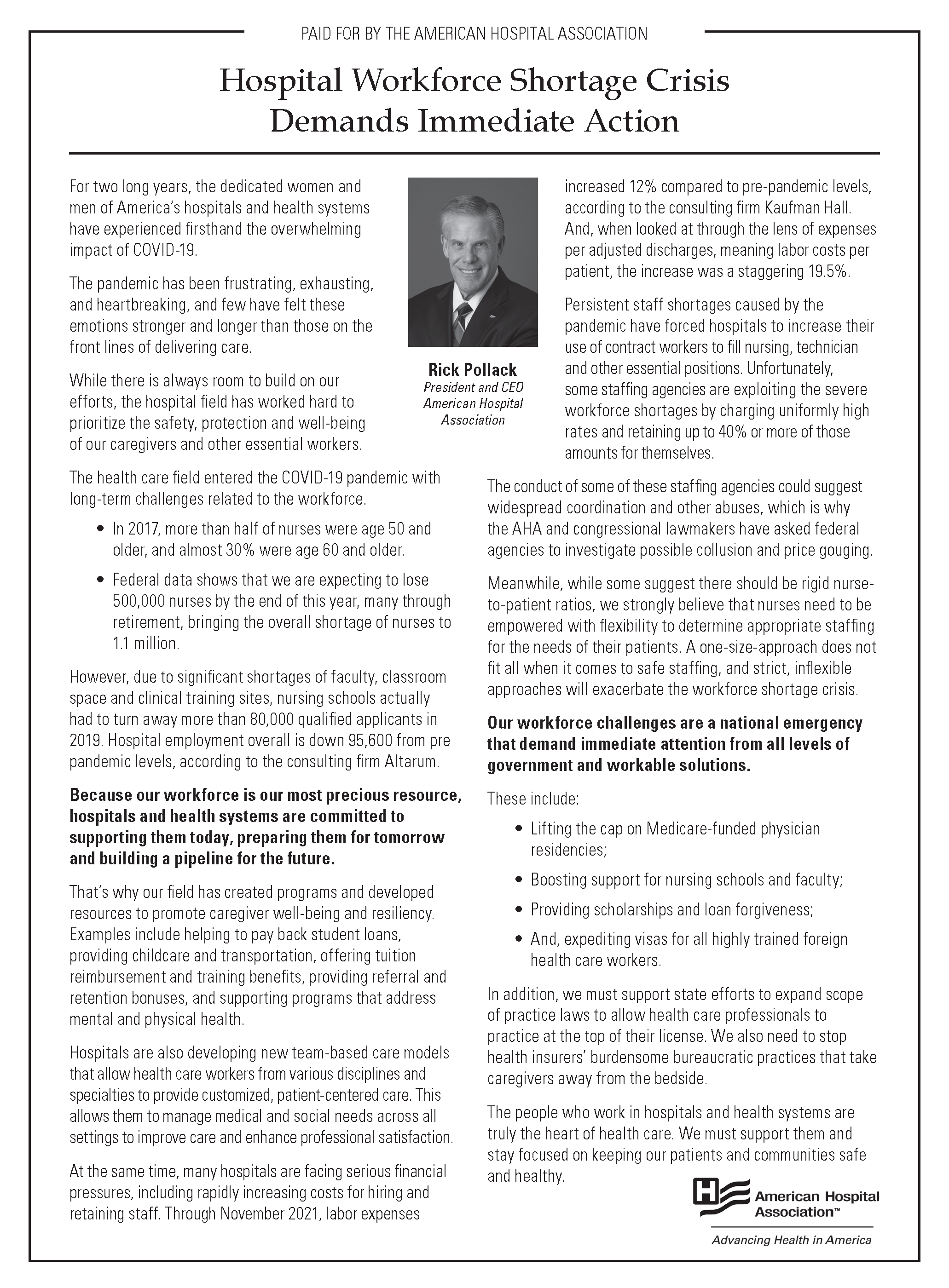

Hospital Workforce Shortage Crisis Demands Immediate Action
Rick Pollack
President and CEO
American Hospital Association
For two long years, the dedicated women and men of America’s hospitals and health systems have experienced firsthand the overwhelming impact of COVID-19.
The pandemic has been frustrating, exhausting, and heartbreaking, and few have felt these emotions stronger and longer than those on the front lines of delivering care.
While there is always room to build on our efforts, the hospital field has worked hard to prioritize the safety, protection and well-being of our caregivers and other essential workers.
The health care field entered the COVID-19 pandemic with long-term challenges related to the workforce.
- In 2017, more than half of nurses were age 50 and older, and almost 30% were age 60 and older.
- Federal data shows that we are expecting to lose 500,000 nurses by the end of this year, many through retirement, bringing the overall shortage of nurses to 1.1 million.
However, due to significant shortages of faculty, classroom space and clinical training sites, nursing schools actually had to turn away more than 80,000 qualified applicants in 2019. Hospital employment overall is down 95,600 from pre-pandemic levels, according to the consulting firm Altarum.
Because our workforce is our most precious resource, hospitals and health systems are committed to supporting them today, preparing them for tomorrow and building a pipeline for the future.
That’s why our field has created programs and developed resources to promote caregiver well-being and resiliency. Examples include helping to pay back student loans, providing childcare and transportation, offering tuition reimbursement and training benefits, providing referral and retention bonuses, and supporting programs that address mental and physical health.
Hospitals are also developing new team-based care models that allow health care workers from various disciplines and specialties to provide customized, patient-centered care. This allows them to manage medical and social needs across all settings to improve care and enhance professional satisfaction.
At the same time, many hospitals are facing serious financial pressures, including rapidly increasing costs for hiring and retaining staff. Through November 2021, labor expenses increased 12% compared to pre-pandemic levels, according to the consulting firm Kaufman Hall. And, when looked at through the lens of expenses per adjusted discharges, meaning labor costs per patient, the increase was a staggering 19.5%.
Persistent staff shortages caused by the pandemic have forced hospitals to increase their use of contract workers to fill nursing, technician and other essential positions. Unfortunately, some staffing agencies are exploiting the severe workforce shortages by charging uniformly high rates and retaining up to 40% or more of those amounts for themselves.
The conduct of some of these staffing agencies could suggest widespread coordination and other abuses, which is why the AHA and congressional lawmakers have asked federal agencies to investigate possible collusion and price gouging.
Meanwhile, while some suggest there should be rigid nurse-to-patient ratios, we strongly believe that nurses need to be empowered with flexibility to determine appropriate staffing for the needs of their patients. A one-size-approach does not fit all when it comes to safe staffing, and strict, inflexible approaches will exacerbate the workforce shortage crisis.
Our workforce challenges are a national emergency that demand immediate attention from all levels of government and workable solutions.
These include:
- Lifting the cap on Medicare-funded physician residencies;
- Boosting support for nursing schools and faculty;
- Providing scholarships and loan forgiveness;
- And, expediting visas for all highly trained foreign health care workers.
In addition, we must support state efforts to expand scope of practice laws to allow health care professionals to practice at the top of their license. We also need to stop health insurers’ burdensome bureaucratic practices that take caregivers away from the bedside.
The people who work in hospitals and health systems are truly the heart of health care. We must support them and stay focused on keeping our patients and communities safe and healthy.


